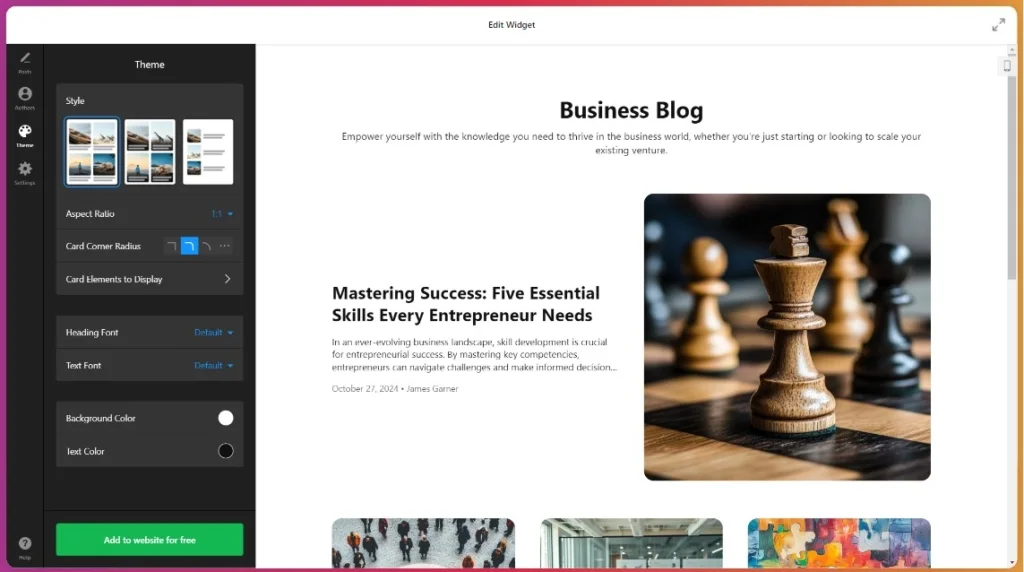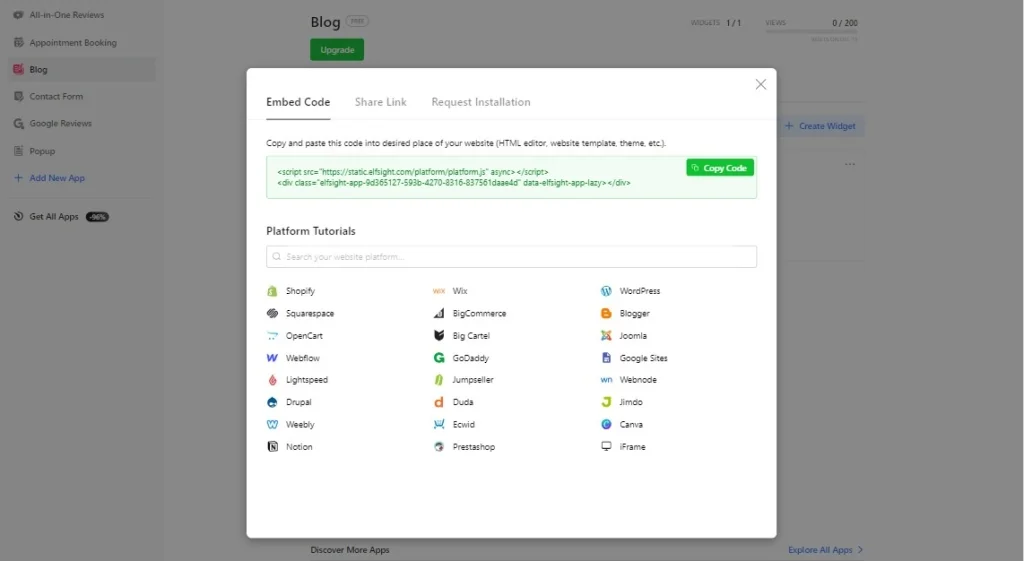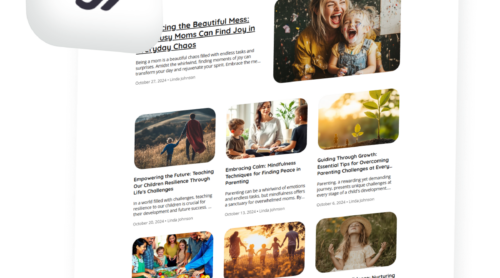Starting a blog isn’t just a hobby anymore. It’s a powerful tool for building an online presence, sharing your expertise, and even creating a new income stream. In fact, the digital world is seeing an unprecedented number of people turning to blogging, whether for personal branding, business, or community-building.
1. Choose Your Niche and Blog Topic
Before you create your blog website, it’s essential to think about what topics you’re passionate about or have expertise in. A clear niche helps attract a loyal readership and makes it easier to stand out in the crowded blogging space. To get started:
- Define your interests and strengths. Think about what excites you. Whether it’s fashion, technology, personal finance, or travel, focusing on a topic you genuinely enjoy will make it easier to consistently create engaging content.
- Explore different types of blogs. There are various types of blogs you might consider, each catering to unique interests and goals:
- Business blogs. Sharing insights and tips about industry trends, business strategies, and entrepreneurship.
- Financial blogs. Offering guidance on personal finance, investing, or saving, aimed at helping readers manage their money better.
- Motivational blogs. Providing inspiration, advice, and personal stories that encourage readers to pursue their goals.
- Creative blogs. A space for artists, writers, and creators to share their projects and showcase their talent.
- Travel blogs. Covering travel tips, destination reviews, and cultural insights for globetrotters.
- Food blogs. Sharing recipes, food reviews, and culinary techniques for fellow food enthusiasts.
- Research blog examples. Look at popular blog sites in your chosen niche. Studying successful blogs can provide inspiration, show what works, and help you understand content that resonates with readers.
- Identify your unique angle. Think about what sets you apart. Maybe you have a unique perspective, professional insights, or an innovative approach. A distinct angle will give your blog personality and make it memorable.
2. Select a Blogging Platform and Domain
Choosing the right blogging platform and domain is crucial to building a successful blog. With so many blog sites and website builders available today, it’s essential to find one that aligns with your needs and level of technical expertise. Here’s a guide to help you choose the right platform and domain.
Choosing a Blogging Platform
There are several popular blogging platforms, each with its own features and benefits:
- WordPress. Known for its flexibility and vast range of plugins, WordPress allows you to create a fully customizable blog. However, it may require some technical setup, making it better suited to those with web development experience.
- Wix and Squarespace. These platforms are user-friendly and perfect for beginners. They offer drag-and-drop features that simplify the process of creating a blog website, though they can be limited in customization.
- Blogger. Google’s Blogger platform is straightforward and free, ideal for those who want a simple, no-fuss blog site. However, it lacks the flexibility and customization options offered by other platforms.
- Medium. Medium is an excellent choice for those who prioritize content over design. With a large built-in audience, it’s ideal for bloggers looking to share stories, articles, or ideas with a broad audience without managing technical setup. However, customization and monetization options are limited compared to other platforms.
For an in-depth comparison of these and other top blogging platforms, check out this guide on the Best Blogging Platforms for additional insights and recommendations.If you want a fast, simple way to create a blog website without technical requirements, Elfsight’s Blog Widget offers an ideal solution. Elfsight’s builder enables you to start a fully functional blog without needing to set up a new platform. It’s designed for seamless integration into any website, letting you add a professional blog to your site in minutes.
Choosing Your Domain Name
Your domain name is your blog’s online address and a vital part of building a memorable brand. Here are a few tips:
- Keep it simple and relevant. Choose a domain name that’s easy to remember and reflects your blog’s theme.
- Use keywords if possible. Incorporate relevant keywords (like “food” for a food blog) to help with search engine visibility.
- Check domain availability. Ensure your chosen name is available on popular domain registrars like GoDaddy or Namecheap.
3. Set Up Your Blog for Effortless Launch
Once you’ve chosen your platform and domain, it’s time to set up your blog. Setting up a blog can range from complex (requiring coding and customization) to effortless, depending on the platform and tools you choose. Here’s a simple, step-by-step guide to get your blog running, with Elfsight’s Blog Widget as a quick, easy option for those who want a hassle-free setup.
Step 1: Set Up Your Blog Platform
If you’re using a traditional platform like WordPress or Wix, start by creating an account and selecting a theme that suits your blog’s style. Customize the theme by adding branding elements like logos, colors, and fonts. This helps create a cohesive, professional look for your site.
However, if you’re looking for an alternative to traditional platforms and want to create a blog website quickly, Elfsight’s Blog Widget offers a powerful, easy-to-use solution. With this widget, you can skip the technical setup entirely and have a fully functioning blog embedded on your site in just minutes.
Step 2: Integrate Elfsight’s Blog Widget (Quick Setup)
For those who prefer a simpler setup, the Elfsight Blog Widget provides an efficient way to create a blog site and embed it seamlessly within an existing website. Here’s how easy it is to set up:
- Select a template. Start by choosing a template in the intuitive editor that fits your website’s goal and appearance.

- Add content. Add the text, photo, visdeo or any other media files. You can also opt for AI Writer feature that will help you with content generation.

- Customize Your Blog Design. Use Elfsight’s intuitive builder to select a layout and color scheme that matches your website’s branding. You can choose from several professionally designed templates tailored for readability and engagement.

- Generate Your Embed Code. Once your blog is customized, Elfsight will provide you with a unique code for embedding.

- Embed the Code on Your Website. Paste the code into your website’s HTML or use a plugin (for WordPress, for example) to insert it. The blog will automatically fit with your site’s design, making it look integrated and cohesive.
This quick setup allows you to add a blog to your website without needing technical expertise, making Elfsight’s widget an ideal choice for busy entrepreneurs or creatives who want a professional blog without a time-consuming setup.
Step 3: Set Up Essential Pages and Structure
For a successful blog, add some key pages alongside your blog posts:
- About Page. Introduce yourself or your brand to readers.
- Contact Page. Make it easy for readers or potential clients to get in touch.
- Categories and Tags. Organize your content using categories that make it easy for readers to navigate.
Step 4: Launch and Test Your Blog
With Elfsight’s Blog Widget, starting a blog and managing it is easy. The widget’s built-in editor allows you to quickly add new posts and make updates. Additionally, the blog integrates well into your existing site, so you don’t have to worry about complicated adjustments.
Try all Elfsight Blog features in the user-friendly editor and start blogging right now!
4. Create and Optimize Content
Creating high-quality, engaging content is the backbone of any successful blog. To stand out and grow your audience, you’ll need well-structured posts that are optimized for readability and search engines. This section covers best practices for creating posts and explains how Elfsight’s Blog Widget can make content creation faster and more efficient with its AI-powered features.
Tips on Structuring Your Blog Posts:
A well-structured blog post is easier for readers to follow and improves SEO. Here are some tips for structuring your content effectively:
- Use clear, compelling headlines. Your headline should grab attention while giving readers a sense of what they’ll gain by reading the post.
- Organize with subheadings. Break up sections using subheadings to make content more digestible. This also helps with SEO by highlighting key topics.
- Keep paragraphs short. Online readers tend to skim, so aim for short paragraphs that improve readability.
- Include visuals. Images, infographics, and videos can make posts more engaging and improve retention. Visuals also give readers a break from text and illustrate complex points more clearly.
Tips on Optimizing Content with SEO in Mind:
Optimizing your blog posts for SEO helps attract more readers by making your content easier to find on search engines. Here’s how to optimize content:
- Use keywords naturally. Include relevant keywords in your headlines, subheadings, and throughout the text without overloading. For example, use phrases like “creating blog website” or “smart blog add new post” in a way that feels natural.
- Add Meta descriptions and alt text. These elements help search engines understand your content, improving its visibility.
- Internal and external links. Link to other pages on your blog to encourage readers to explore more of your content. Additionally, link to high-authority sites to increase your blog’s credibility.
By optimizing your content, you’ll increase your blog’s visibility and attract a larger audience over time.
Accelerate Content Creation with Elfsight’s AI Generator
Elfsight’s Blog Widget includes an AI Generator feature that can help speed up content creation while maintaining high standards of quality. Here’s how it can enhance your blogging experience:
- AI-Generated text and images. The AI Generator creates well-structured text on any topic, with compelling headlines, organized sections, and relevant visuals. This means you can create posts more quickly without sacrificing quality.
- Consistent style and tone. AI helps ensure that all posts are consistent in tone and format, making your blog look cohesive and professional.
- Effortless editing. With Elfsight’s built-in editor, you can make quick changes to any part of the post, whether it’s the text, layout, or visuals. This flexibility allows you to refine your content before publishing.
The AI Generator not only saves time but also enhances creativity by providing you with a ready-to-use structure. For bloggers with a busy schedule or those new to content creation, Elfsight’s AI feature makes it easy to add new posts to your blog in minutes.
5. Monetize Your Blog
Once your blog is established with quality content and a steady audience, the next step is monetization. If you wonder how to start a blog and make money, you can combine several strategies to maximize your income as many successful bloggers often do.
Popular Monetization Methods
- Affiliate marketing. Join affiliate programs that align with your blog’s niche and promote products or services. When readers make purchases through your affiliate links, you earn a commission. This is a popular strategy for many blog examples focused on product reviews, lifestyle advice, and tutorials.
- Display ads. Integrate ads from networks like Google AdSense directly into your blog. You earn money based on the number of impressions or clicks the ads receive. Display ads are ideal for blogs with high traffic and diverse audiences.
- Sponsored content. Partner with brands to create sponsored posts. Many businesses are willing to pay for content that introduces their products to your readers, especially if your blog has established authority in your niche.
- Selling digital products. If you have valuable skills or knowledge, consider creating and selling digital products, such as e-books, online courses, or printables. This approach works well on educational blogs, personal development sites, and creative platforms.
- Membership or subscription models. Offer premium content or perks to readers who subscribe to your blog. Platforms like Patreon or buy-me-a-coffee models allow readers to support you financially while getting exclusive content.
Successful bloggers across various blog examples – from travel and finance to wellness and tech – have monetized their sites with these methods, turning hobbies into lucrative careers. For more in-depth tips on monetization, explore [our guide on effective blog monetization strategies] (link to internal resources if available).
6. Build and Grow Your Audience
A thriving audience is key to long-term blogging success. Here’s how to effectively promote and expand your blog’s reach:
Promotion and Growth Strategies
- Social media. Share your blog posts across platforms like Instagram, Twitter, LinkedIn, and Pinterest. Tailor content to each platform, and engage with your followers to build a loyal community. Social media can be a powerful tool to build blog website traffic and attract new readers.
- SEO optimization. Implement SEO best practices in each blog post, including keyword use, meta descriptions, and internal linking. By optimizing for search engines, you can drive organic traffic to your blog, making it easier for new readers to discover your content.
- Email marketing. Build an email list and send out regular newsletters featuring your latest posts, special offers, or exclusive content. Email subscribers are often highly engaged and more likely to return to your blog.
- Collaborations and guest blogging. Partnering with other bloggers or influencers in your niche can introduce your blog to a wider audience. Writing guest posts on reputable blogs or collaborating on social media can attract new readers and enhance your credibility.
Brand Building and Community Engagement
Creating a brand identity helps readers connect with your blog on a personal level. This involves maintaining a consistent voice, style, and aesthetic across your blog and social media. Building a community around your blog fosters loyalty, engagement, and positive word-of-mouth.
Whether you’re aiming to make your own blog website a successful niche blog or a broader lifestyle site, engaging with your audience, staying consistent, and being authentic are essential to growth. These strategies will not only build blog website traffic but also foster a lasting relationship with your readers.
How Do You Keep Your Blog Fresh and Engaging?
Maintaining a successful blog goes beyond creating new content – regular updates and upkeep are essential to keep your website blog relevant, engaging, and optimized. Here’s how to make sure your blog stays valuable for your readers and performs well in search rankings:
- Audit and Update Content Regularly: Periodically review your posts to check for outdated information, broken links, and formatting issues. Freshening up older posts can boost your SEO rankings and improve user experience.
- Repurpose Popular Content: If certain blog posts perform well, consider repurposing them into new formats like infographics, videos, or social media posts to extend their reach.
- Streamline with Tools and Products: Leverage tools that help automate and streamline blog maintenance. For example, Elfsight’s Blog Widget makes it easy to manage your created blog website needs, providing a smooth interface for content updates and integration with your site.
Regular maintenance will help your created website blog stay competitive and valuable to your audience, ensuring you stay relevant in a constantly evolving online landscape.
Final Thoughts
Starting a blog has never been easier, and the benefits are immense. From building an online presence and sharing your passions to growing a loyal audience and even generating income, a blog opens endless possibilities. If you’ve been wondering how to start a blog or create a blog, take the leap today! With the right tools and dedication, you’ll be well on your way to building something impactful.
Ready to begin? Explore our tools to make a website blog that’s professional, engaging, and easy to manage. Elfsight’s Blog Widget simplifies the blogging process, allowing you to create a blog that reflects your unique voice and vision. Start your journey now and bring your ideas to life in the digital world!







